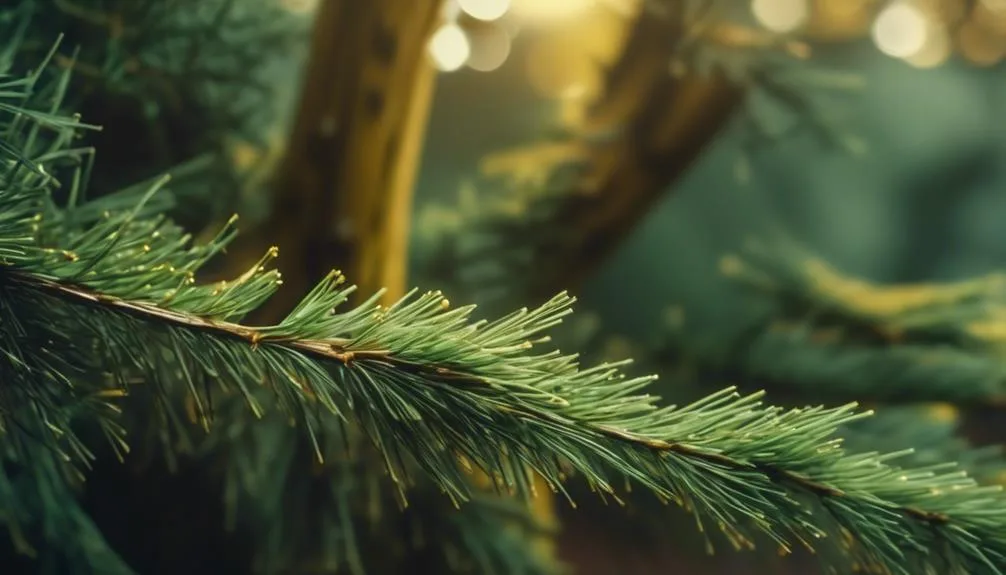Is your cedar tree looking a little under the weather with yellow needles? Don't panic. There could be a few reasons for this change. Understanding why your cedar tree's needles are turning yellow is essential for nursing it back to health.
Let's explore the possible causes together to help you revive your beloved cedar tree.
Environmental Stress
Facing environmental stress, trees may exhibit visible signs of distress such as yellowing needles or wilting leaves. Climate change impact can lead to extreme weather conditions, including droughts and heatwaves, which can significantly affect the health of cedar trees. These conditions can cause water stress, making it difficult for the trees to absorb essential nutrients, resulting in yellowing needles.
Additionally, soil pollution effects from contaminants like heavy metals or chemicals can disrupt the balance of nutrients available to the cedar trees, further exacerbating their distress. Understanding these environmental stressors is crucial for effectively addressing the health of cedar trees.
Nutrient Deficiency
Cedar trees experiencing nutrient deficiency may display symptoms such as pale or discolored needles, indicating a lack of essential elements necessary for their optimal growth and health. Nutrient deficiency can be caused by various factors, including imbalanced soil pH and poor root health.
- Soil pH: An imbalanced soil pH can affect the availability of nutrients to cedar trees, leading to deficiencies.
- Root Health: Compromised root health due to issues such as compacted soil or root damage can impede the tree's ability to absorb essential nutrients.
- Nutrient Uptake: Nutrient deficiencies may also occur when the soil lacks key elements required for the cedar tree's growth.
- Fertilization: Proper fertilization can help address nutrient deficiencies and promote the overall health of cedar trees.
Ensuring the right soil pH, maintaining root health, and providing necessary nutrients through fertilization are crucial for preventing and addressing nutrient deficiencies in cedar trees.
Fungal Infections
Experiencing a fungal infection can cause yellowing needles and other visible symptoms on your cedar tree, indicating a potential threat to its health and vitality. When it comes to treating fungal infections in cedar trees, it's crucial to act promptly to prevent further damage. Here are some treatment options and prevention methods to help you combat fungal infections:
| Treatment Options | Prevention Methods |
|---|---|
| Prune affected branches | Proper spacing when planting cedar trees |
| Apply fungicidal sprays | Avoid overhead watering |
| Improve air circulation | Remove fallen leaves and debris |
| Ensure proper drainage | Use well-draining soil |
Taking proactive measures such as proper pruning, using fungicidal sprays, and maintaining good tree hygiene can help mitigate fungal infections. Remember, early intervention is key to preserving the health of your cedar tree.
Pest Infestations
To effectively address pest infestations on your cedar tree, it's essential to identify common pests and implement appropriate control measures. Some key points to consider include:
- Integrated Pest Management: This approach focuses on long-term prevention of pests through a combination of techniques such as biological control, habitat manipulation, and the use of resistant plant varieties.
- Natural Predators: Encouraging the presence of beneficial insects or animals that feed on cedar tree pests can help to naturally control infestations.
- Regular Monitoring: Keeping a close eye on your cedar tree for any signs of pest infestations is crucial for early detection and intervention.
- Selective Pesticide Use: If necessary, opt for targeted and environmentally friendly pesticide applications as part of an integrated pest management strategy.
Improper Watering
Improper watering can lead to stress and vulnerability in your cedar tree, making it more susceptible to pest infestations and other health issues.
When the soil moisture is consistently too high due to overwatering, it creates the perfect conditions for root rot to set in. Root rot occurs when the roots are deprived of oxygen, causing them to decay and become less effective at absorbing water and nutrients. As a result, the cedar tree's needles may turn yellow and eventually drop off.
On the other hand, underwatering can also stress the tree, causing the needles to turn yellow.
It's essential to strike the right balance and ensure that the soil is consistently moist but well-drained to maintain the health of your cedar tree.
Conclusion
Keep a close watch on your cedar tree for signs of stress, nutrient deficiencies, or pest issues.
Prompt attention and proper care can help the tree recover and thrive, ensuring it continues to enhance your landscape for years to come.

My interest in trees started when I first saw the giant sequoias in Yosemite.
I was a teenager then, and I remember thinking, “I need to learn more about this.”
That moment stuck with me.
A few years later, I went on to study forestry at Michigan Tech.
Since graduating, I’ve worked in a mix of hands-on tree care and community education.
I’ve spent over ten years helping people understand how to plant, maintain, and protect the trees in their neighborhoods.
I don’t see trees as just part of the landscape.
They are living things that make a real difference in our daily lives.
